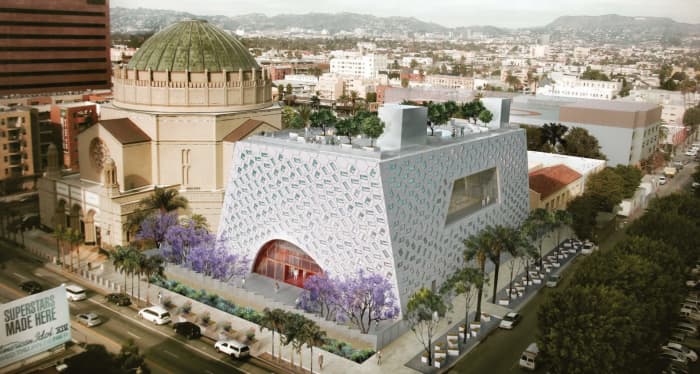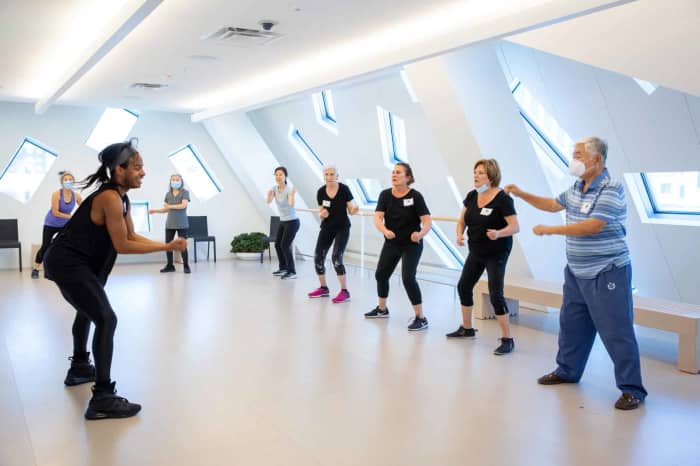This post was originally published on this site
This article is reprinted by permission from NextAvenue.org.
At 104 years old, Sally has more stories than you can imagine. As a young woman during World War II, she was the embodiment of Rosie the Riveter, working in New York City’s defense factories. She went on to break barriers as one of the first women recognized as a full journeyman in a California shipyard. She has been one of the most dedicated and oldest members of SAGE, the LGBTQ+ older-adult advocacy group.
But the pandemic hit her hard. She moved into a skilled nursing facility, and her vibrant life changed. She missed her friends and wasn’t herself. When SAGE was safely able to reopen in-person services, Sally’s pre-pandemic spirit was rekindled — she could see and talk with her friends and join in the reopening festivities.
Read: Should I move to a 55 and older community when I retire?
Older adults want to connect
Sally’s story is a powerful reminder of an important service offered by older adult centers: connection. As leaders of SAGE and Wallis Annenberg GenSpace, we advocate for our older adults, and when we talk with our members, it’s not the food, housing, or exercise classes that keep people coming back — it’s the connection.
Read: This is how boomers are reinventing retirement living
September is National Senior Center Month, but we try not to use that term. Instead, we’re working to redefine the traditional senior center. In our experience, older adults don’t want to spend their time in places built around the notion that they are victims in decline. They want to be in places that empower them to learn, have fun, and grow. Our spaces should reflect this difference and be designed in a way that embraces the idea of new stages in life instead of ages.
More: Can nursing homes move beyond their bad reputations?
That’s why GenSpace was created. Our innovative center in L.A.’s Koreatown offers older adults opportunities to find new hobbies, pursue creativity and health, and meet new people in a welcoming environment.

Designed by Rem Koolhaas, GenSpace is located in Los Angeles’ Koreatown.
GenSpace.org
Creating a community
We held focus groups of older adults to better understand how to create a space that serves the needs of its members. Those focus groups informed the design and programming of GenSpace, so older adults feel supported and seen.
We’ve continually heard from our members that GenSpace is the one place where they feel welcome. So far, we’ve seen a great response from the community, as our classes fill to capacity and we offer more programs to meet demand.
At SAGE, we’ve been advocating and supporting LGBTQ+ older adults for 42 years. When we opened our first SAGE Centers, LGBTQ+ older folks passionately embraced our spaces as the only elder-focused places where they truly felt at home. We’ve seen the power of creating a community and never has it been more important.
And while we are aware of the increasing interest and need for spaces like ours, the country is not prepared to handle the pending age shift.
By 2034, adults aged 65 and older will outnumber children for the first time. This new wave of older people will have longer lifespans and smaller family and support networks while facing more housing, transportation, caregiving, healthcare and technology challenges.
Services are seriously lagging
Our ecosystem of services, resources, and facilities that support older adults is seriously lagging. Not only do we not have the necessary resources, but we aren’t prepared to offer older adults what they need to thrive.
Furthermore, centers today often aren’t designed to serve the disparate needs of our increasingly diverse population. LGBTQ+ elders, for example, experience acute levels of social isolation, while Black and brown elders struggle with serious health disparities, as illustrated during the COVID pandemic.

The innovative center offers older adults opportunities to find new hobbies and meet new people.
GenSpace.org
These are some reasons why LGBTQ+ elders and older adults of color, who are more likely to age in poverty and with serious health problems, need community centers more than anybody.
Investments to support older adults are growing, which is encouraging. California is one of five states implementing a Master Plan for Aging (MPA), which provides a road map to transform the infrastructure and services available to each state’s rapidly aging population. New York state and Vermont are drafting MPAs now. But more is needed as demand grows for spaces that help older adults stay active and connected.
Also on MarketWatch: The number of baby boomers and Generation X who plan to work past age 70—or forever—is stunning
By revolutionizing spaces and services for older adults, we can breathe new life into these traditional community institutions and turn them into destinations that older people want and need. We can and must give older adults a vibrant next phase of their lives — so other people like Sally can party and connect with their community until they’re 104 and beyond.
Michael Adams is the chief executive officer of SAGE (Advocacy and Services for LGBTQ+ Elders), the world’s largest and oldest organization dedicated to improving the lives of LGBTQ+ older people.
Jennifer Wong is the director of Wallis Annenberg GenSpace, a new community center for older adults in Los Angeles. GenSpace provides older adults with a place to pursue creativity and connection while working to change the way people think and talk about aging.
This article is reprinted by permission from NextAvenue.org, © 2022 Twin Cities Public Television, Inc. All rights reserved.
More from Next Avenue:

